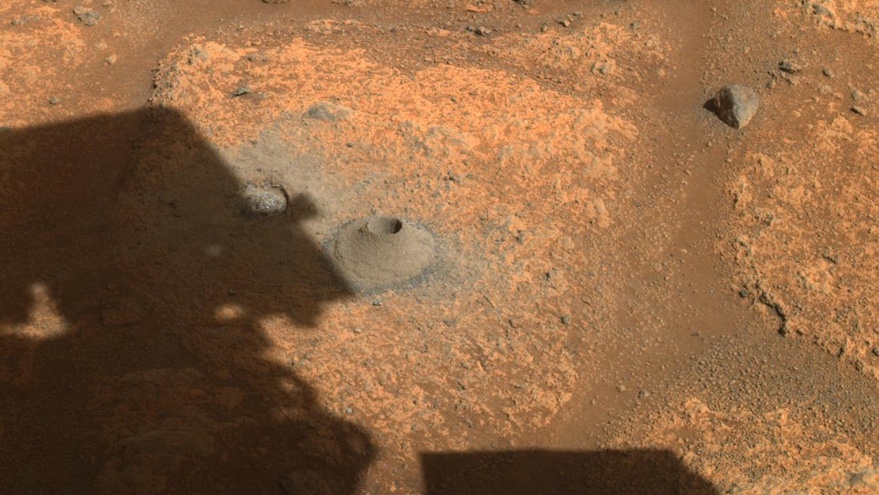Products You May Like
WASHINGTON — NASA scientists and engineers are working to understand why the first sampling attempt by the Mars rover Perseverance failed to collect any material.
In a statement late Aug. 6, NASA said that while Perseverance had drilled a sample from a rock on the floor of Jezero Crater, that sample did not make it into a titanium sampling tube that would store the material for eventual return to Earth.
Jessica Samuels, surface mission manager for Perseverance at the Jet Propulsion Laboratory, said that part of the automated sample collection process is to insert a probe into the sample tube to measure the volume of the sample it contains. “The probe did not encounter the expected resistance that would be there if a sample were inside the tube,” she said in the NASA statement.
It’s unclear why the sample didn’t make it into the tube, but for now project officials believe it is more likely unforeseen properties of the rock kept it from entering the tube rather than a malfunction of the sampling system itself.
“Over the next few days, the team will be spending more time analyzing the data we have, and also acquiring some additional diagnostic data to support understanding the root cause for the empty tube,” Jennifer Trosper, project manager for Perseverance at JPL, said in the statement. That work will include imaging the drill hole with a camera on the rover’s robotic arm.
Past tests of the sampling system, both on Earth before launch and on Mars since its landing six months ago, showed no problems. That included processing last month of a “witness tube,” a sampling tube without any material to measure any contamination.
“The great news is that all that worked perfectly, and we are ready to sample,” Trosper said at a July 21 briefing about the mission.
In a worst-case scenario, a problem with the sampling system would upend NASA’s long-term Mars exploration strategy. Perseverance is the first of three missions by NASA and the European Space Agency to collect and return Mars samples to Earth. The samples cached by Perseverance will be collected by a NASA-led lander mission, which will place them into a container and launch it into Martian orbit. An ESA-led orbiter will grab that container and return it to Earth. Those two later missions, still in their early phases of development, will launch no earlier than 2026, returning the samples to Earth as soon as 2031.
NASA, though, emphasized that past Mars missions have run into problems drilling or gathering Martian materials. That ranges from “sticky” soil that made it difficult for the Phoenix lander in 2008 to scoop material into its instruments to the failure of a heat flow probe, or mole, to drill into the Martian surface on the InSight mission.
“While this is not the ‘hole-in-one’ we hoped for, there is always risk with breaking new ground,” Thomas Zurbuchen, NASA associate administrator for science, said in the agency statement. “I’m confident we have the right team working this, and we will persevere toward a solution to ensure future success.”
“I have been on every Mars rover mission since the beginning, and this planet is always teaching us what we don’t know about it,” said Trosper. “One thing I’ve found is, it’s not unusual to have complications during complex, first-time activities.”
